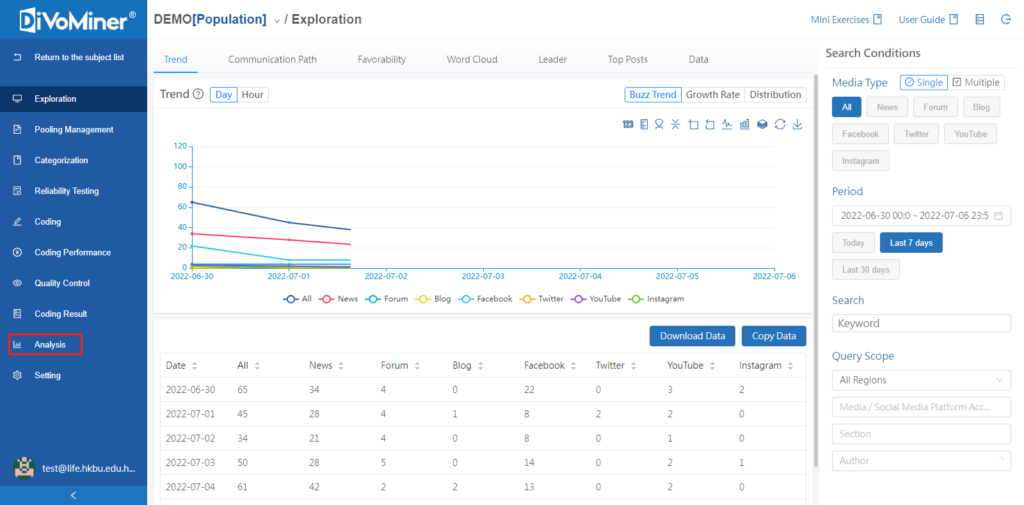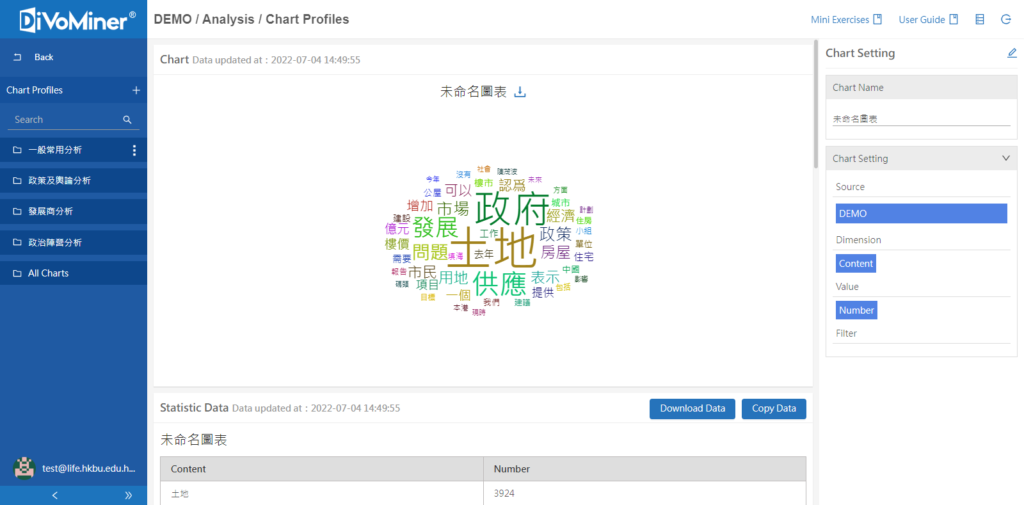This article will describe in detail how to complete the content analysis on the platform step by step.
Step 1: After logging into the account and entering the subject page, click [Create a Subject], follow the platform guides to set up the topic, and then you can manage it.


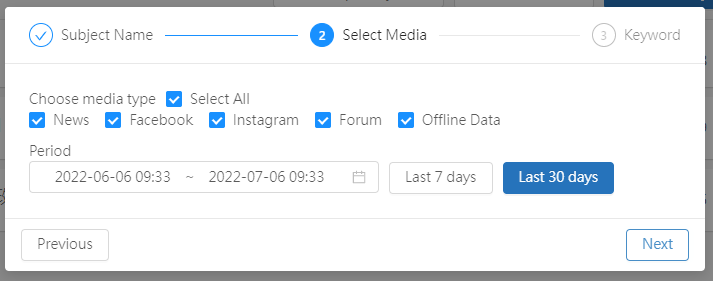
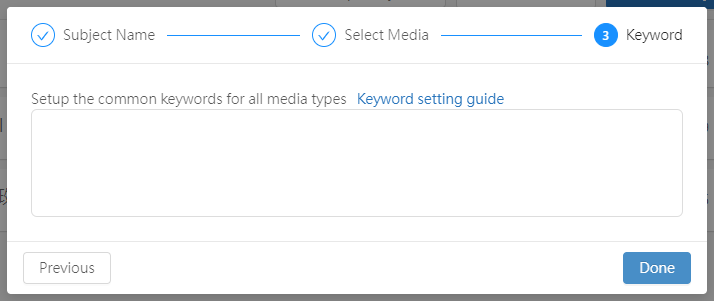
Reminder: keywords of the subject are critical for searching data, please click [Keyword setting guide] if you do not know how to set up the keywords.
- Step 2: After creating a subject, you can go to the Exploration page to view the relevant data. If you discover irrelevant data in the result, you can modify the subject keywords on the setting page until the data content meets the expectations.
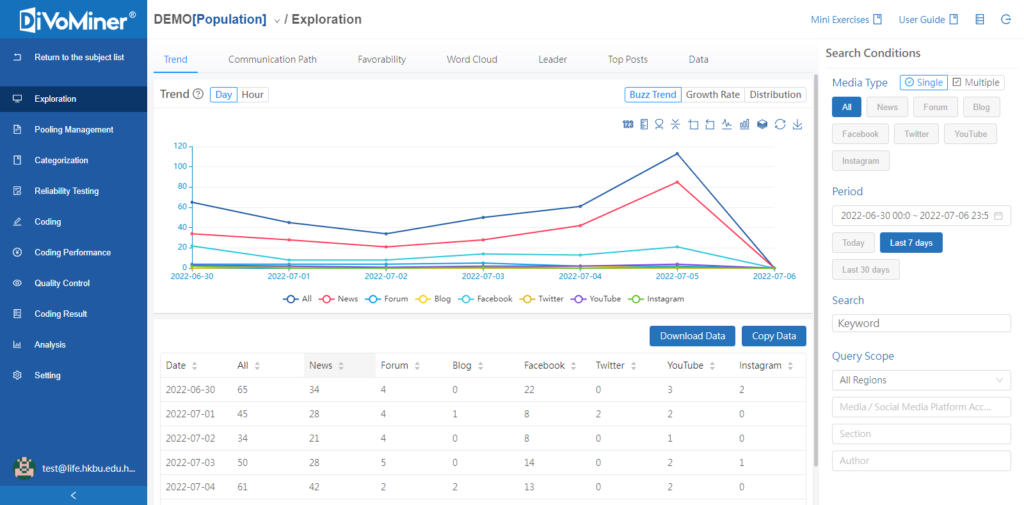
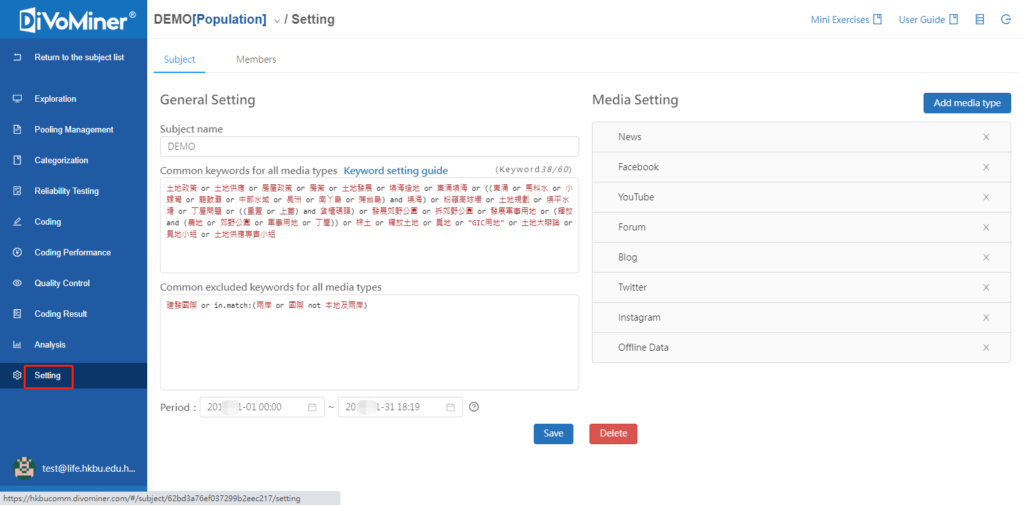
- Step 3: Extract the data. On the pooling management page, click [Extract Main Post] to extract the data into the coding pool which can be processed by machine coding and manual coding.
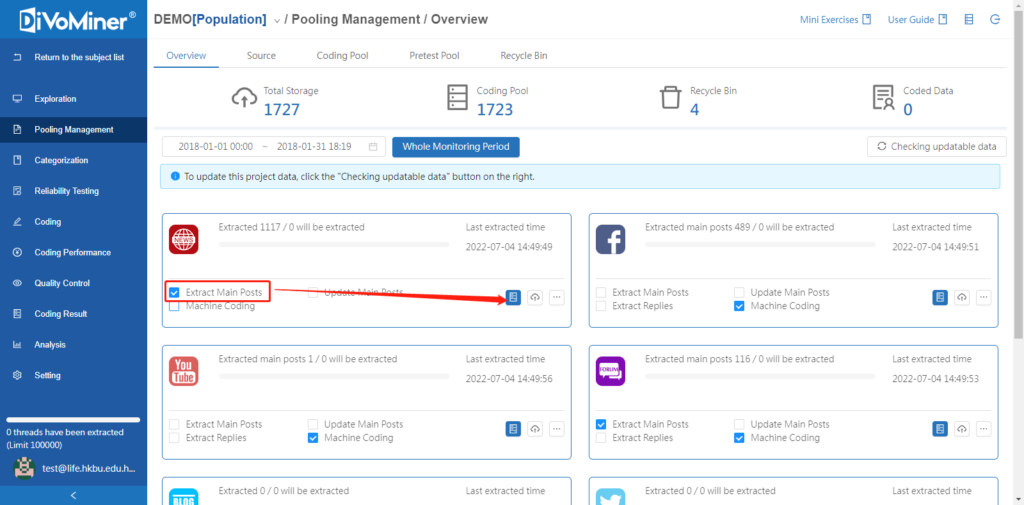
- Step 4: Categorization Setting. Set up category on the categorization page, you can either create a new one or import a category table from your computer.
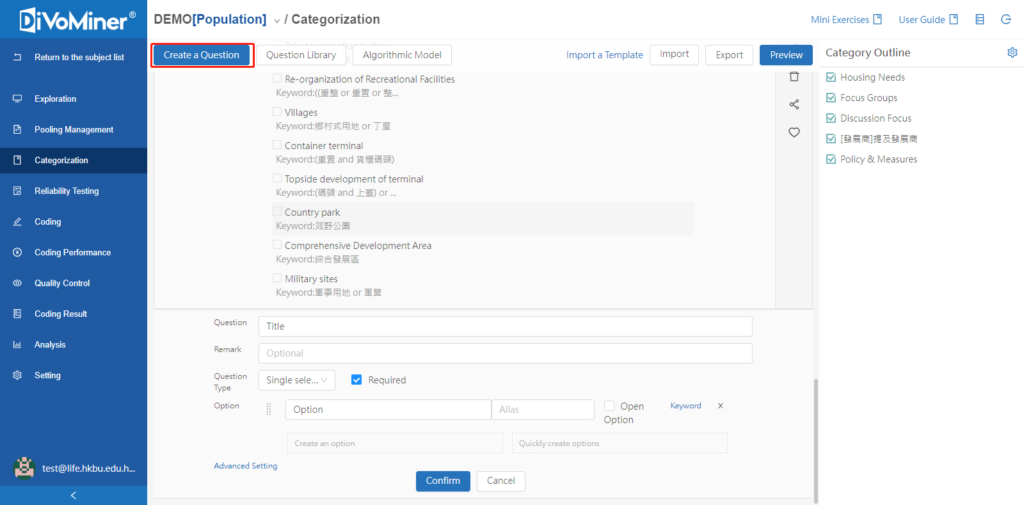
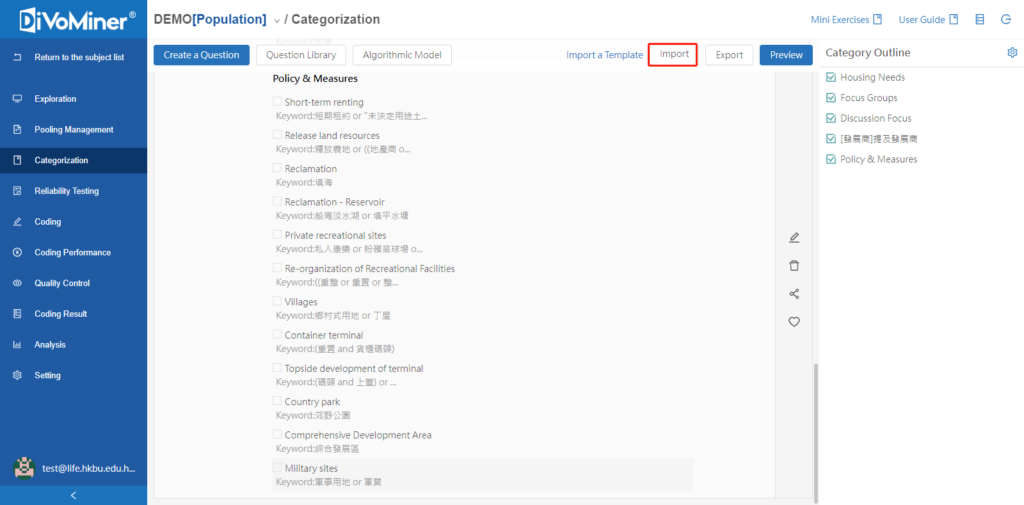
- Step 5: After the category setting is completed, machine coding or manual coding can be performed. If machine encoding is required, select the media type that needs machine coding on the pooling management page and select machine encoding. The data options are automatically preselected on the Reliability Testing and Coding pages after machine coding is done.
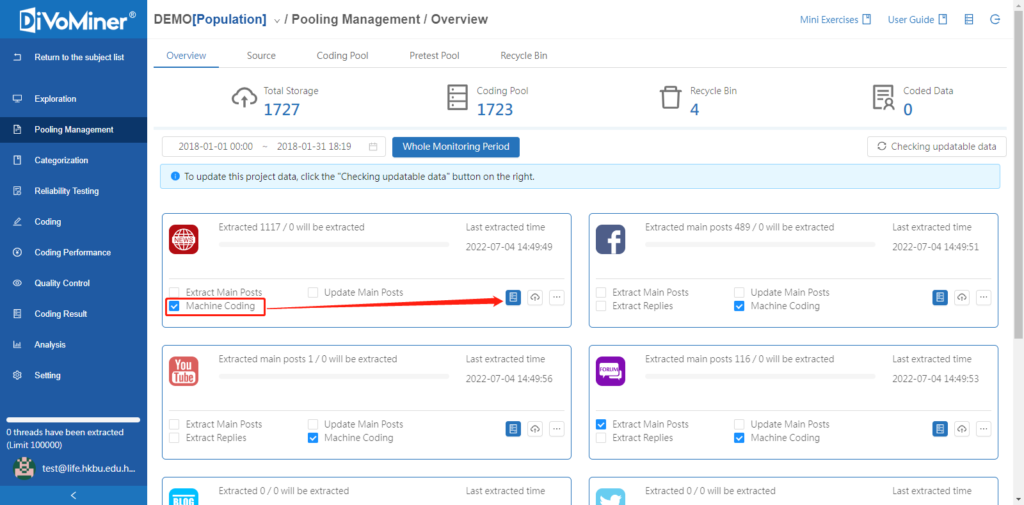
- Step 6: Reliability test. Check the coder’s reliability on the reliability test page. If the amount of project data is large and there are different coders, the reliability test can be carried out according to the research needs before manual coding. The reliability coefficient is calculated to observe whether different coders have reached an acceptable level of agreement before manual coding.
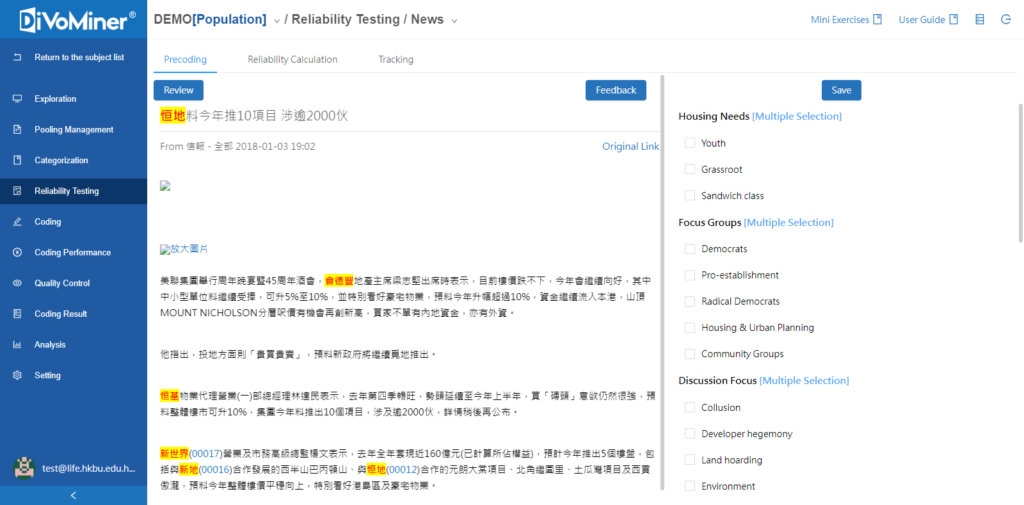
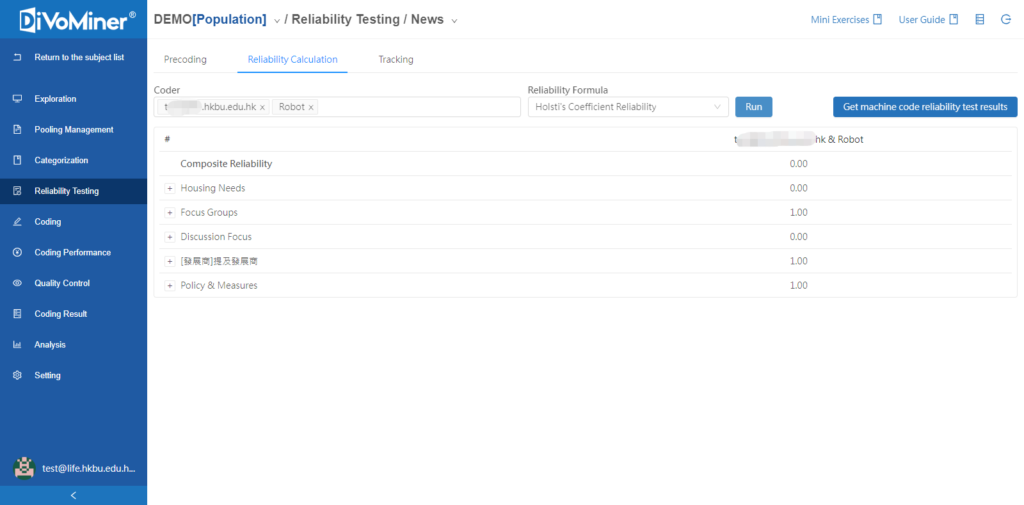
- Step 7: Coding. Enter the coding page to perform manual coding.
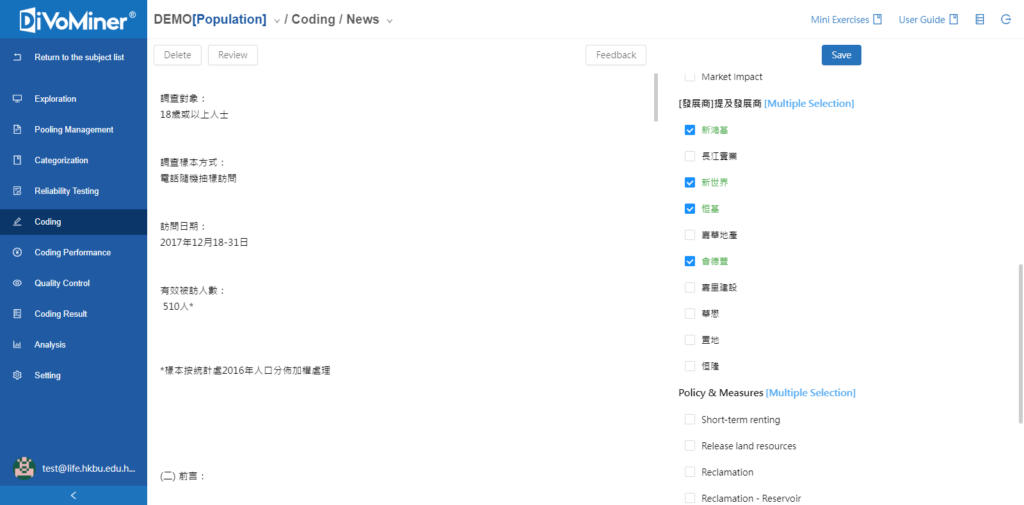
Remarks: The operation of steps 5, 6, and 7 are flexible based on research needs. If the categories are mostly objective questions, only machine coding is required and the coding accuracy will be very high. If there are subjective questions and objective questions are both in the category, machine coding and manual coding are needed at the same time. If there is a large amount of data and multiple coders for coding, a reliability test can be performed before manual coding in order to ensure the coding performance.
- Step 8: Check the coding result. You can review each category on the coding result page.
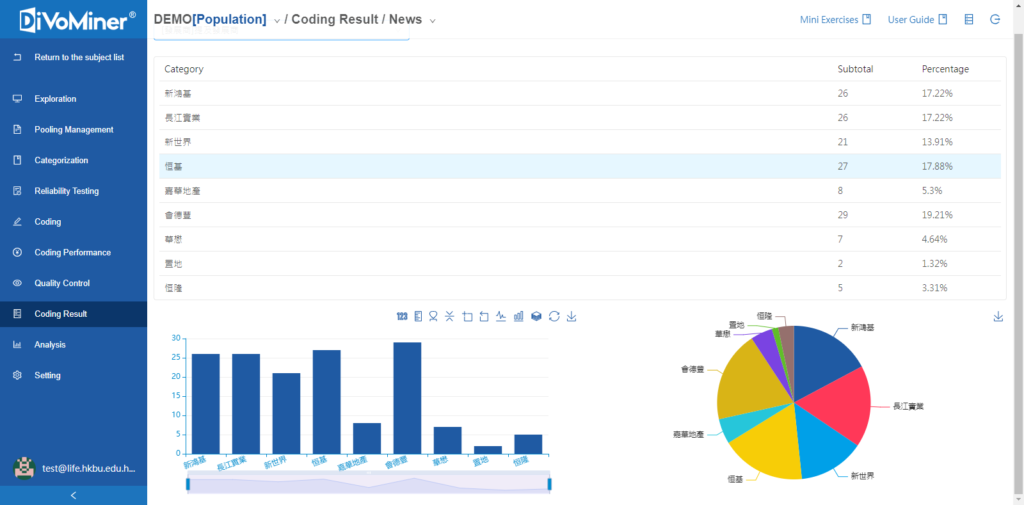
- Step 9: Modify the coding result. You can modify the coding result on the quality control page.

- Step 10: Statistical analysis. You can create various charts according to the coding results on the analysis page.
